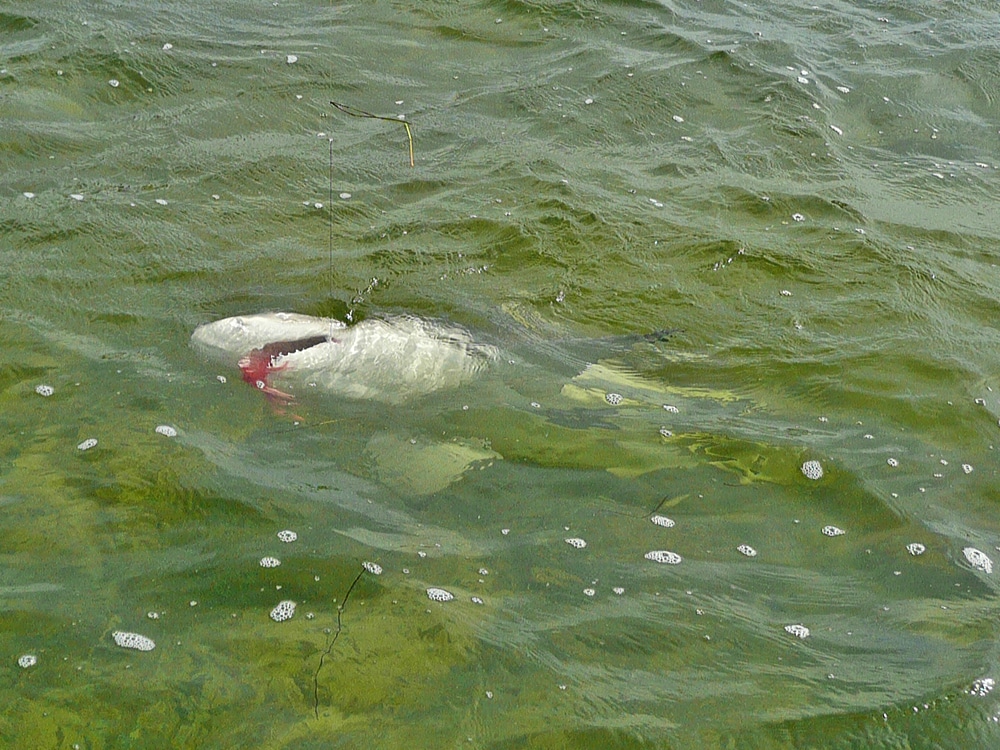
When fly fishing for toothy fish, adding a bite tippet to your leader is a must to prevent cutoffs. The question is, should you opt for heavy fluorocarbon or monofilament, or use some type of wire?
Fly fishers who eschew wire bite tippets don’t land many king mackerel, sharks, barracuda or beefy bluefish. They may get plenty of strikes, but the fights with those sharp-toothed game fish are usually brief, and their fly boxes get cleaned out quickly.
It’s true that, in very clear water, all but the smallest-diameter wire often deters strikes. And the thinner braided (multi-strand) wire, while less visible to fish, frequently fails when the fish’s sharp teeth saw through the filaments during prolonged battles.
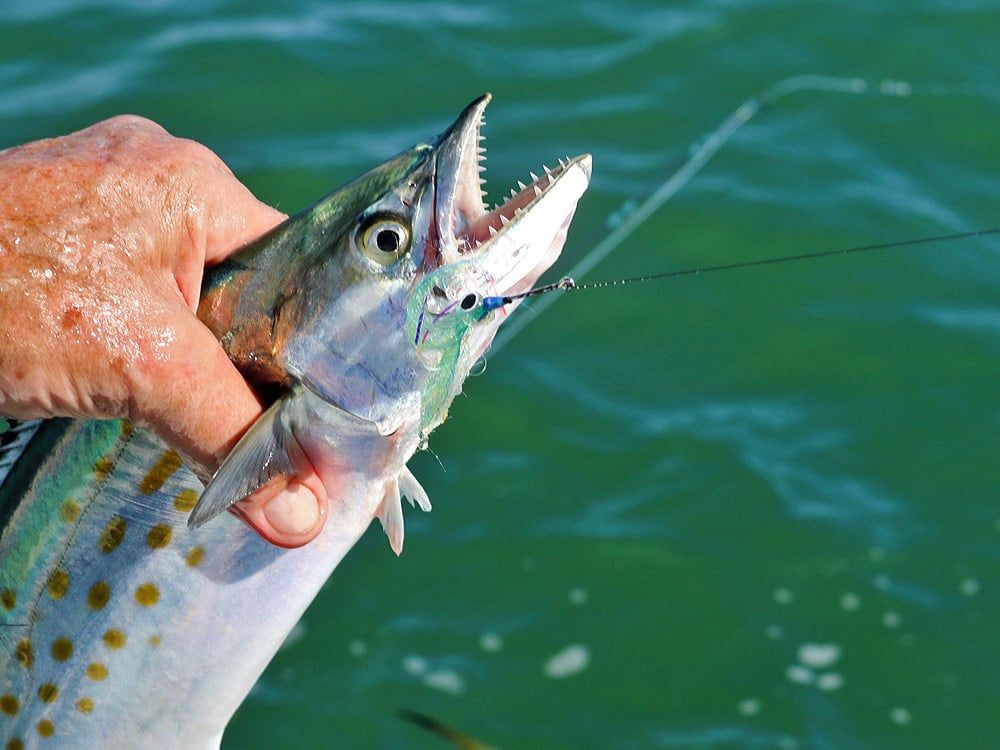
Wire vs. Mono or Fluoro
While fly anglers using heavy monofilament or fluorocarbon (50- to 80-pound) for a bite tippet land plenty small to medium bluefish and Spanish, king, and cero mackerel, their battles with the larger specimens, which run farther and faster, and fight longer, often end in disappointment and a severed bite tippet. And that usually happens boatside, when the reduced length of fly line in play affords considerably less stretch.
A piece of wire leader rarely deters a hungry gamefish eyeballing a frisky livey, so most live-bait anglers fish wire without a second thought. But things are different when fly fishing. Then, the key is to use the thinnest, shortest wire practicable. I never use more than 2 to 4 inches for my bite tippets. That short trace provides ample protection from cut-offs, and anything longer makes fly turnover more difficult, particularly when trying to punch flies into a breeze.
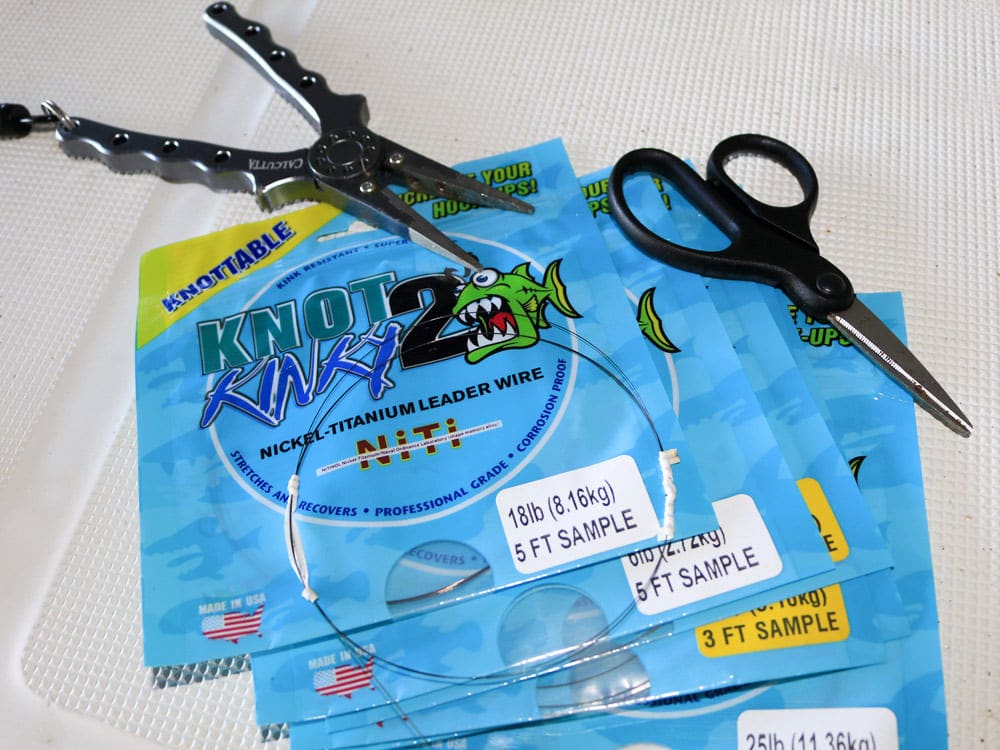
Single-Strand and Multifilament Wire
Wire choices boil down to single-strand and multifilament wire. Single-strand has fallen out of favor with fly fishers, largely because it is prone to kinking, and, with the exception of some new titanium stuff, not conducive to tying typical knots. Yet, single-strand wire still has its fans, because it holds up, rarely kinks if kept short, and in smaller diameters and coffee color, is fairly stealthy.
When it comes to selecting the proper size numbers, the smaller the number, the smaller the diameter and the lower the breaking strength. No. 3 wire, a good choice for Spanish mackerel (https://www.saltwatersportsman.com/spanish-mackerel-on-fly) and small bluefish and kingfish, has a diameter of 0.012 inch and breaks at about 30 pounds. You’ll need to step up to No. 7 for big blues and kings, and No. 9 for sharks. It’s important to note that it does not have a coating that can fray, and become more visible, the way some muti-strand wires (cable) do.
The best single-strand wire-to-monofilament (or fluorocarbon) connection is the Albright special. And to attach a fly, the only viable option is a haywire twist. Many anglers find it tricky to perform, at first, but it forms a loop that affords the fly excellent freedom of movement, so it’s worth spending a little time perfecting it. And when kept short, chances of stainless single-strand kinking are slim.
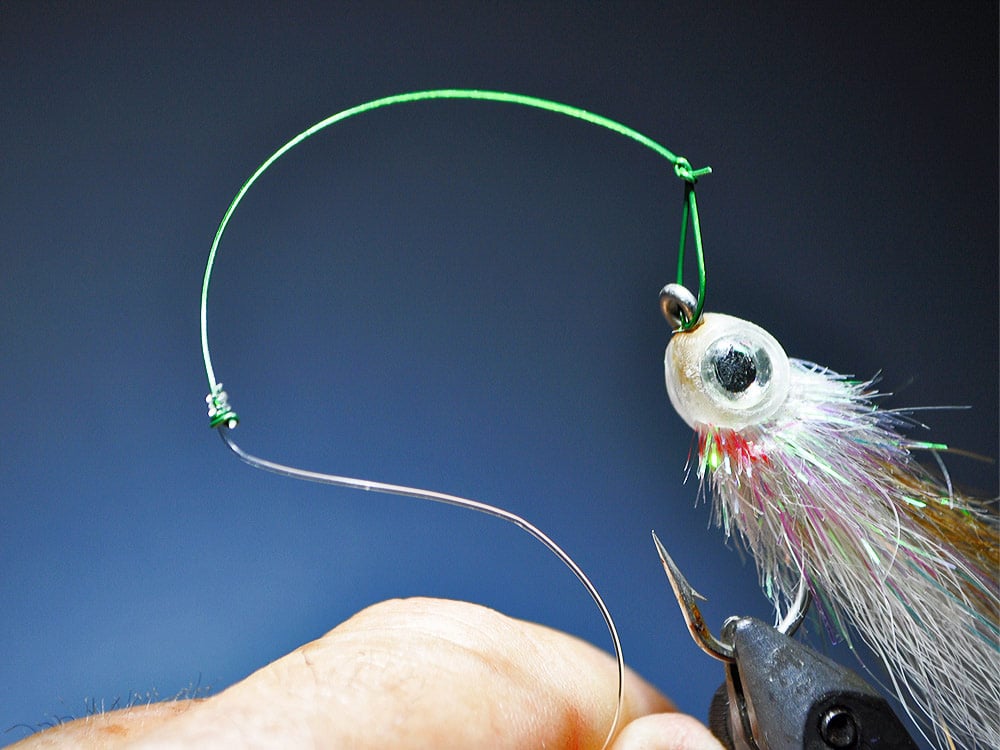
Knottable Wire
A great option, though a bit more costly, is one of the “tie-able” or “knottable” single- or multi-strand wires available. All call for specific knots, and right up front, you need to understand their nature when connecting a trace of wire to mono or fluorocarbon leader, and when tying on a fly.
You will discover that, depending on the knot you use, the knottable wire doesn’t cinch quite as tightly as mono. Close inspection will reveal slight gaps between drawn-down wraps. Still, said wires do hold well under pressure, if the knot is tied correctly. In fact, one manufacturer, Aquateko, maker of Knot2Kinky nickel-titanium (NiTi) leader wire, notes that very fact on the packaging of both its single-strand and 7-strand products. Thus far, I’ve tested the material with Spanish mackerel, and found the knot strength to be very good with a clinch, improved clinch, uni-knot, Albright Special, Homer Rhodes loop, and others.
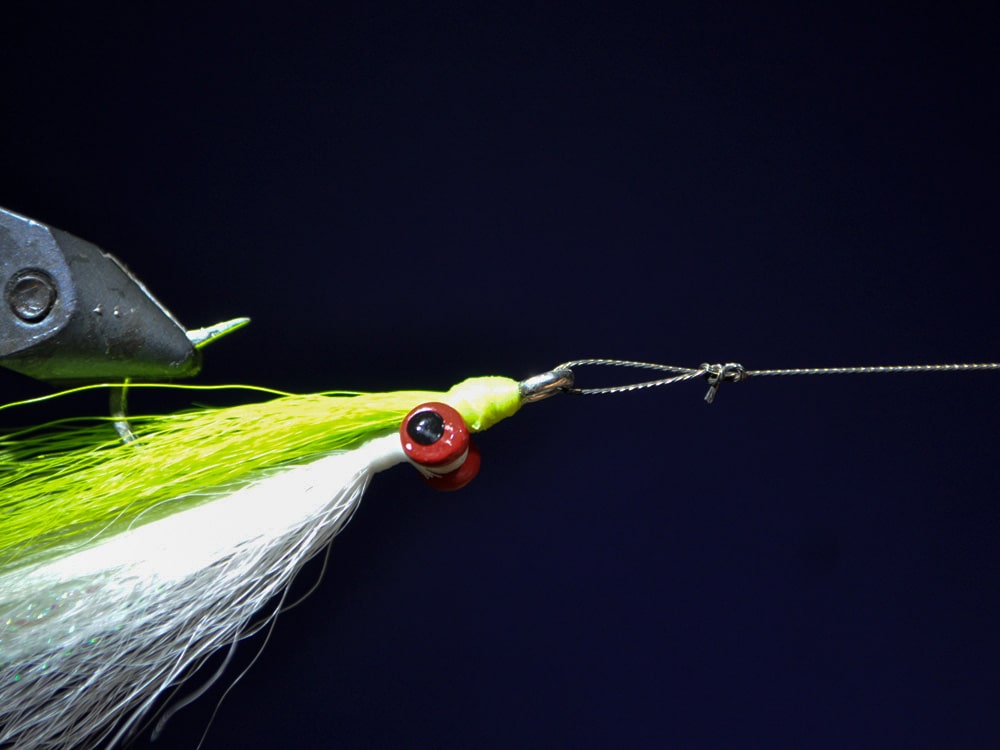
NiTi wire has no memory. It is actually elastic in nature, unlike conventional stainless single-strand wire. Due to lack of memory, it resists kinking, and that is precisely why you cannot employ the haywire twist to connect a fly or lure. I discovered, by the way, that said brand’s 7-strand wire snugs down tighter than its single-strand wire.
Other knottable wires on the market include stainless-steel products, some of which are low-stretch or nylon-coated. A sampling of manufacturers includes Tyger, American Wire makers of Surflon Micro Supreme, Cortland, maker of Toothy Critter stainless wire, and Rio.









